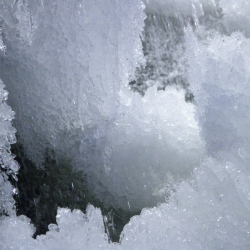
Water ice is surprisingly abundant on Pluto’s surface, a new map reveals. Scientists created the map using data collected by NASA’s New Horizons spacecraft during its flyby. The new map is more sensitive than an earlier version also produced using flyby observations, and shows more ice.
"But despite its much greater sensitivity, the map still shows little or no water ice in the informally named places called Sputnik Planum (the left or western region of Pluto’s ‘heart’) and Lowell Regio (far north on the encounter hemisphere)," NASA officials wrote in a statement Thursday (Jan. 28). "This indicates that at least in these regions, Pluto’s icy bedrock is well hidden beneath a thick blanket of other ices such as methane, nitrogen and carbon monoxide."
New Horizons zoomed within just 7,800 miles (12,550 kilometers) of Pluto on July 14, 2015, returning history’s first up-close looks at the dwarf planet and its five moons. The new and old water-ice maps were both made using infrared-light observations captured by New Horizons’ Ralph/Linear Etalon Imaging Spectral Array (LEISA) instrument, at a distance of about 67,000 miles (108,000 km) from Pluto, NASA officials said.
